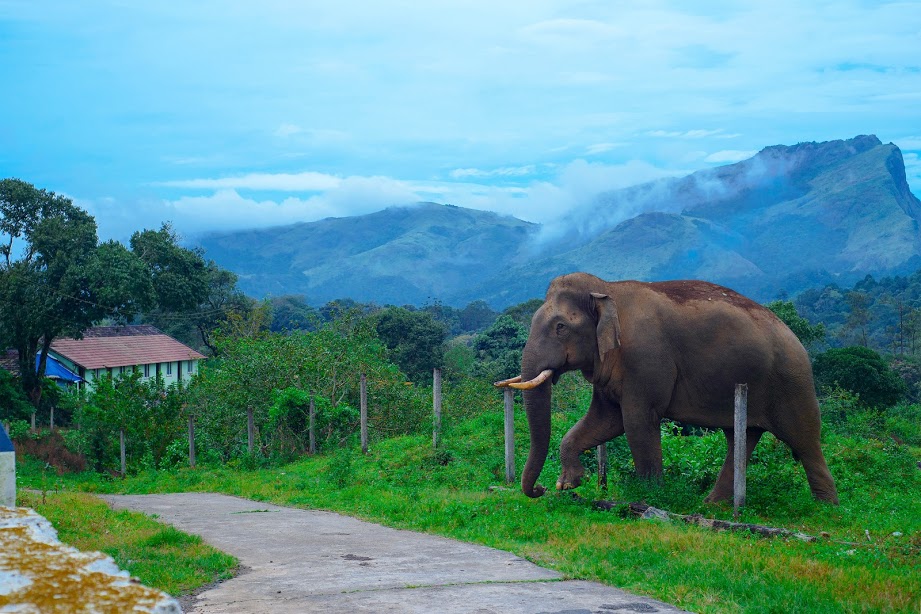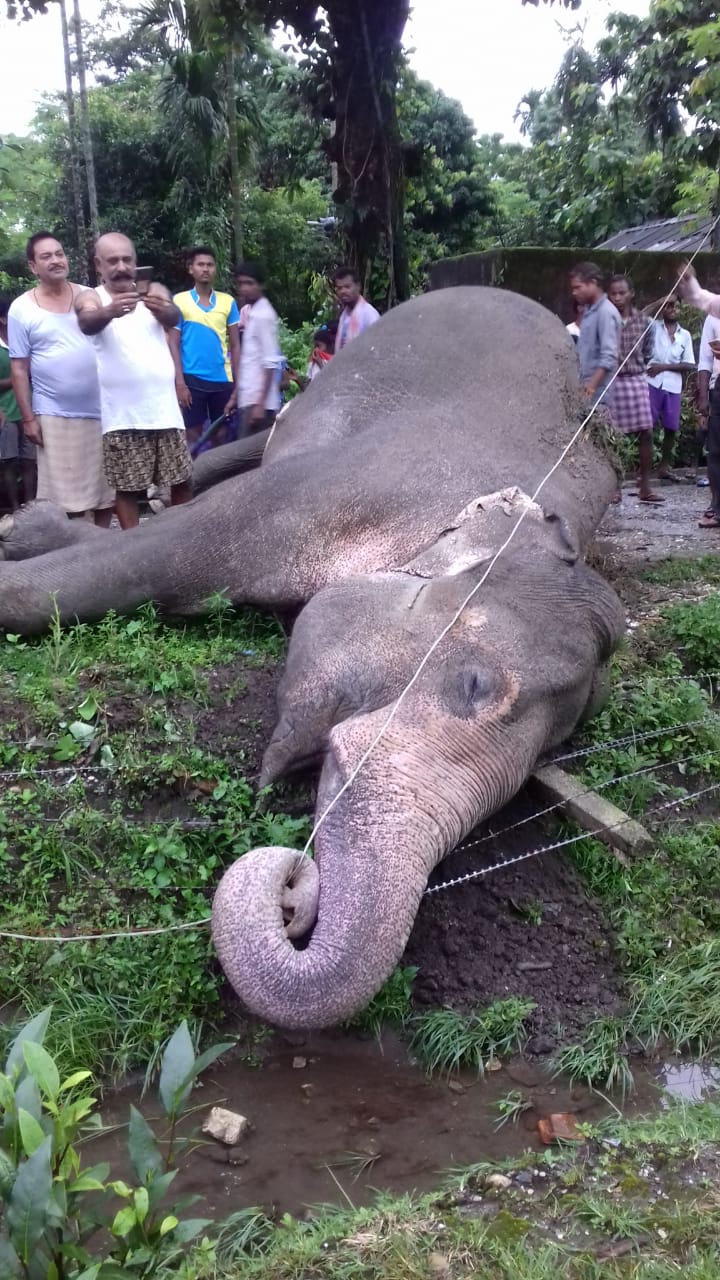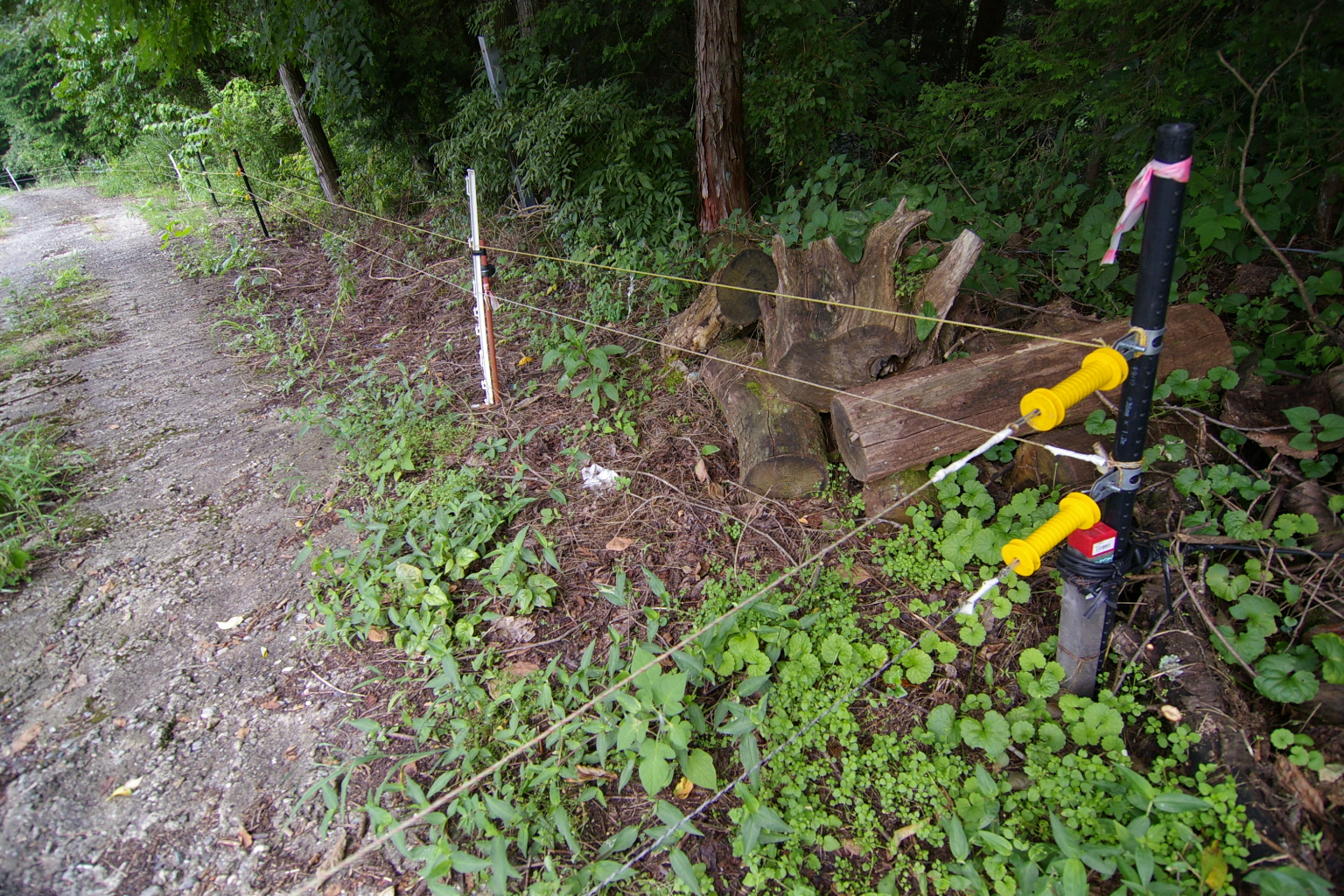Live Wire
First published in Sanctuary Asia,
Vol. 40
No. 8,
August 2020
By B.K. Sharma
First published in Sanctuary Asia, Volume 40, August 2020
Residents of Kamalanga, a nondescript village in the Dhenkanal district of Odisha, were awoken from their slumber in the early hours of October 27, 2018, when their power supply snapped with a loud bang. They also heard elephant distress calls near the village. Rushing to the spot, to their horror, they discovered the bodies of seven elephants lying scattered about near a small water channel passing through their agricultural land. The animals had been electrocuted by a sagging 11 KV power line set up by the Central Electricity Supply Utility (CESU) to provide electricity to a company building a railway bridge nearby. A preliminary investigation revealed that a herd of 13 elephants was passing by when the tragic incident took place. The dead included a tusker, five females and a calf. The post-mortem revealed that one elephant cow was pregnant with an 18-month fetus. Predictably, the proverbial blame game unfolded. While forest officials claimed that CESU had been informed of elephant movement in the area, energy officials retorted that the information was nonspecific and had been relayed only a few days before. There was, however, no disputing the fact that the ground clearance of the 11 KV transmission line, which as per Rule 77 of Indian Electricity Rules, 1956, should have been at a minimum height of 4.6 m., was far lower.
The Government was swift in taking administrative action against those presumed to be negligent. A Superintendent Engineer and an SDO of CESU were suspended; a Junior Engineer was sacked while three forest officials, including the Range Officer, were suspended. A criminal case vide FIR No. 116 was registered in Kantabania Police Station under sections 166/429/34 IPC read with Section 146 of Electricity Act, 2003 and section 51 of Wildlife Protection Act, 1972. The Crime Branch, which took up the investigation held both forest and CESU officials criminally liable for the incident and arrested an ex-Junior Engineer of CESU, a forester and a forest guard. The National Green Tribunal took suo motu cognizance of the matter and on the basis of a report submitted by a multi-disciplinary Committee appointed by it, imposed a penalty of rupees five crores on CESU, which was to be used “for remedial measures for protection of elephant corridors”. The Committee also suggested an action plan, which included that electric lines should have a minimum clearance of 6.096 m. in forest areas, and should be inspected twice a year for sagging.
Whose home is it anyway? In the Nelliyampathy hills, Palakkad, Kerala, a lone elephant attempts to navigate a man-made fence that blocks the traditional ancestral routes followed by generations of elephants. Photo: Aneesh Sankarankutty.
In the Nelliyampathy hills, Palakkad, Kerala, a lone elephant attempts to navigate a man-made fence that blocks the traditional ancestral routes followed by generations of elephants. Photo: Aneesh Sankarankutty.
A recent viral video of an elephant mother helping her calf climb a road barricade in Kerala was widely touted as a ‘heartwarming display of a mother’s love’; but conservationists were quick to point out that if anything, the video shows the harsh realities elephants face every day to survive in their own homes. As development projects, human settlements and agriculture fields expand into natural forests, elephants’ homes have diminished and fragmented significantly. They are then forced into closer contact with people, resulting in conflicts that escalate into deaths – both animal and human. In a bid to protect their crops from being eaten, communities on the fringes of forests resort to drastic measures, including bursting firecrackers, using fires, and barricading with electrical fences. Currently, such conflicts are managed by translocating elephants and monetary compensation for losses. Though there have been some promising preventive measures such as SMS-alerts for local communities on elephant movements, or use of natural barriers like trenches around fields, as long as avoidable infrastructural intrusions into forests continue, the future of the Asian elephant in the subcontinent looks bleak. – Ed.
A Pan-India Problem
This disturbing incident at Kamalanga is symptomatic of the malaise facing elephants in most of their habitats and corridors throughout the country (see box on page 69). Both official and unofficial data show that among other factors electrocution, both accidental and intentional, has emerged as the leading cause of elephant deaths in India. Replying to Unstarred Question no. 844 in the Rajya Sabha on February 8, 2020, Government informed that in the five-year period (2014-15 to 2018- 19), as many as 490 pachyderms died of unnatural deaths, of which 333 (68 per cent) were on account of electrocution. The three eastern homes to 31 per cent of Indian elephants (2017 census), reported a disproportionately large number of electrocution deaths (162), with Assam (66), Odisha (57) and West Bengal (39), accounting for a little under half of all electrocution deaths.
Around the world
Intentional electrocution of African elephants is almost non-existent; accidental electrocution are few and far between. Asian elephants unfortunately get electrocuted intentionally and accidentally at regular intervals. But India has the dubious distinction of being at the top of the macabre graveyard heap.
In September 2017, in a freak incident in Botswana, home to the largest African elephant population (approximately 1,30,000) in the world, nine elephants were electrocuted after coming in contact with a fallen power line, which they had pulled down to a gushing pool of water. Earlier in March 2016, a magnificent bull called Placid was killed in Zimbabwe because of accidental contact with a low hanging cable. The same year, an elephant was electrocuted in Queen Elizabeth National Park in Uganda after smashing a wire mesh fence surrounding a transformer. A very rare instance of intentional electrocution was recorded in Kenya in August 2019 when an elephant was killed in Kieni area after coming in contact with an electrical fence set up by a house owner seeking to keep elephants out.
Elephant deaths are reported in several countries in Asia too – Sri Lanka, Myanmar, Bangladesh, and Indonesia, to mention a few. Most of these were on account of accidental electrocution in forested areas though some were also intentional electrocution. As anthropogenic encroachments such as large-scale deforestation and infrastructure projects like dams and highways rise, so will human elephant conflict.

An elephant killed by an electrical fence at the Bamandanga tea estate, West Bengal close to the Gorumara National Park. Of the 333 recorded deaths by electrocution in India (between 2014- 2019), 39 were reported from the state. Photo: S. P. O. A. R.
The deadly gap between solution and implementation
Way back in 2010, in the wake of a series of elephant electrocution deaths in Odisha, the Ministry of Environment, Forest and Climate Change (MoEFCC) had appointed a four-member committee headed by Chief Conservator of Forest A.K. Biswal to “examine the causes of elephant deaths, the status of protection systems and to suggest improvements”. Their report, submitted to the government in December 2010, suggested an amendment to the Wildlife Protection Act, 1972 to incorporate a provision similar to culpable homicide not amounting to murder of the Indian Penal Code so that errant officials could be imprisoned upon conviction for three to seven years in case of a negligent act leading to elephant death. The Committee also recommended minimum ground clearance of 5.5 m. for transmission lines of 11 KV and below in vulnerable areas. It further suggested that the Right of Way width for 33 KV and 11 KV lines should not be less than 15 m. and 7 m. respectively.
It stipulated that all cables should be insulated, installed with earth-leakage circuit breakers and that regular joint inspection be carried out. An Elephant Task Force set up by the Karnataka High Court in 2012 recommended that the minimum clearance of electric wire should not be less than 6.096 m. on flat ground and 9.144 m. on sloping and steeper terrain. Headed by Prof. Raman Sukumar, the Task Force also specified that extra poles should be provided in hilly areas to ensure safe passage for elephants.
From time to time, detailed guidelines have also been issued by the Government to prevent electrocution. The MoEFCC on October 24, 2016 said distribution companies should use Aerial Bunched Cables (ABC), or underground cables. The Standing Committee of the National Board for Wildlife (NBWL) accepted the recommendations of a Task Force, to mitigate impacts of power transmission lines and other power transmission infrastructures. Power distribution companies were directed to follow all guidelines in populated urban and rural areas, forest areas, ecosensitive zones and wildlife corridors.

Representative image of an electrical fence. Official and unofficial data confirm that electrocution, accidental and intentional, is the leading cause of elephant deaths in India. Photo: Takami Torso / Public Domain.
Right of Way for 11 KV transmission lines were to be optimised by adopting suitable alternative of multi-circuit or multi-voltage lines. Existing transmission lines had to be replaced by insulated cables or underground cables on a priority basis. A nationwide strategy was to be evolved to use state-of-the-art wildlife protection equipment and bury low to medium-voltage transmission lines below ground wherever feasible. But many of the suggested recommendations have either not been implemented or implemented half-heartedly. Elephants and other wild animals therefore continue to face death by electrocution. Regular and institutional coordination mechanisms between Forest and Electricity Departments could avert many such deaths by undertaking joint inspections and intensive patrolling, Compliance both in letter and spirit of the provisions of Indian Electricity Rules, 1956, need to be ensured, as stipulated by the Fact-finding Committee appointed by the National Green Tribunal (NGT). Reinforced electric poles fitted with guard spikes at a height of between one and 2.5 m. would prevent elephants from rubbing against the death towers and stay wires would ensure that neither wind nor elephants themselves pull them down.
In a land where the elephant is universally revered it defies reason that people would display such apathy toward the gentle giants. I am a career police officer, and, in my view, every single incident of electrocution of wildlife must be followed up by a fullfledged criminal investigation either by the Forest or Police Departments. Armed with prima-facie evidence, and a charge sheet or complaint, the accused must be arrested and prosecuted to the full extent of the law. Intentional electrocution with a view to poach ivory would need even more stringent action, with rigorous investigation by the State Crime Branch or Wildlife Crime Cell. All such cases must be recorded in an official data-bank maintained by the Wildlife Crime Control Bureau (WCCB) to analyse the effectiveness of preventive steps and ensure initiation of appropriate legal action against the offenders. If we fail to do so, there will be no real deterrence and India’s much-loved gentle giants will continue to be struck down by live wires, both accidentally and intentionally.
International Records of Elephant Electrocutions
Sri Lanka: January to October 2018: 37 elephants died of electrocution. Many of these were due to live wire fences set up by villagers to prevent crop raiding.
Myanmar: January 2020: Intentional electrocution of two elephants in the Shwe U Daung Forest Reserve.
Nepal: One or two cases of intentional electrocution almost every year.
Bangladesh: October 2017: Five elephants electrocuted in separate incidents in Sherpur district bordering India’s Meghalaya. June 2020: Three adult elephants were found dead in three separate incidents in Cox’s Bazar, Bandarban and Banshkhali after coming in contact with power transmission lines and metal wire fences.
Indonesia: October 2017: Two Sumatran elephants were killed by electrocution in the Aceh province after touching an electric fence set up by villagers for crop protection.
Malaysia: January 2018: A female elephant was electrocuted accidentally in Gerik area.
Cambodia: March 2017: In Cardamom National Park, an elephant was accidentally electrocuted when it leaned against an electric pole, which collapsed.
Thailand: September 2018: An elephant was accidentally electrocuted on contact with a wire in Bang Phil district. April 2020: A female elephant was electrocuted near a fruit grove in Chachoengsao. June 2020: An adult male elephant was killed after touching an electric fence around an orchard in southern Thailand.
India's Records of Elephant Electrocutions
From 2015-16 to 2017-18: 298 elephants died unnatural deaths, 178 (60 per cent) due to electrocution. Assam reported the highest (37) deaths, Odisha witnessed 29 deaths, while West Bengal and Tamil Nadu recorded 26 each. Karnataka was not far behind with 24 electrocution deaths.
Odisha: 2001-2012: 118 elephants died in 91 incidents in 28 elephant ranges. Ninety-one electrocution deaths of which 34 were intentional electrocution by poachers. Mean annual mortality: 9.8. Maximum mortality: 18 deaths in 2011. 2009-2020: Replying to Unstarred Question no. 828 in Odisha Legislative Assembly, the Minister of Environment and Forest informed the House on November 19, 2019 that 119 elephants were electrocuted. Mean annual mortality: 10. 2018-19: 24 deaths. 2020: Two elephant deaths due to intentional electrocution in Keonjhar district.
Assam: 2010-2018: 249 deaths of which 92 were due to electrocution. 2013- 2016: 357 elephant mortalities with 37 attributed to electrocution.
Karnataka: 2009-2017: 106 deaths due to electrocution. Multiple deaths recorded in Bandipur and Nagarahole, where herds crossing forests or agricultural fields have been electrocuted by high tension wires. June 2017: Four elephants including two mothers and two calves were electrocuted to death in Virajpur in a private coffee estate by a snapped wire.
Tamil Nadu: 2015-16 to 2017-18: 26 elephants killed due to electrocution. January 2017: A female and her six-year old calf were electrocuted by a charged farm fence in the outskirts of Mettupalayam. Electric fences are wreaking havoc in the Nilgiri hills, killing elephants at regular intervals in private estates, agricultural fields, resorts and coffee plantation sites.
West Bengal: 2014-15 to 2018-19: 39 electrocution deaths. January 2019: Two elephants died in West Midnapore after coming in contact with a sagging live wire. July 2019: Jhargram district witnessed the killing of three elephants when a herd of 20 was crossing agricultural fields, which had low-lying hightension wires. Villagers of Satbanki performed ceremonial shradhha ceremony on the 13th day in memory of the slain pachyderms.
Uttarakhand: 2001-2019: Unnatural deaths of 411 elephants of which 38 – roughly 10 per cent – was due to electrocution.
Kerala: 2009-2017: 17 deaths due to electrocution, though unofficial sources claim the number is much higher. 2017-2018: 42 wild elephants were electrocuted according to NGO sources. Andhra Pradesh: January-May 2020: Two elephants were electrocuted in Chittoor district. July 2019: A grieving mother returned after a day and uprooted a transformer pole, which had killed her two-year old calf in the Kaundinya Wildlife Sanctuary.
B.K. Sharma is a Senior IPS officer of Odisha cadre with 34 years of distinguished service; in the CBI as SP and DIG, and in the State as Commissioner of Police, Bhubaneswar- Cuttack, Head of Crime Branch and Director General of Police.




